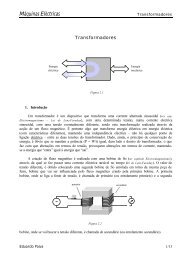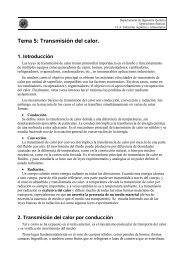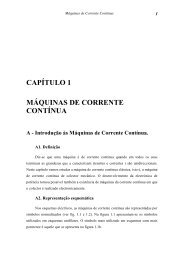Thermal Gasification of Biomass Introduction
Thermal Gasification of Biomass Introduction
Thermal Gasification of Biomass Introduction
You also want an ePaper? Increase the reach of your titles
YUMPU automatically turns print PDFs into web optimized ePapers that Google loves.
coppice plantation. The air-blown TPS gasifier is close coupled to a CFB catalytic tarcracker to reduce tar in the LCV gas which is cooled and water scrubbed to producea clean fuel gas. The fuel gas is compressed and combusted in a gas turbine heatrecovery steam generation system to produce 8 MW e employing a Typhoon EuropeanGas Turbine. The projected overall electrical efficiency is 31%. Initial shakedown andstartup <strong>of</strong> the gasifier is scheduled for early 2000. The project team consists <strong>of</strong>Yorkshire water, TPS, and AEP, part <strong>of</strong> Compagnie Generale des Eaux <strong>of</strong> France, whowill provide operating and maintenance services.Boughton Pumping Station CHP ProjectThis is the second installation by Rural Generation Ltd, the company that developedUK's first on-farm CHP biomass-fuelled plant inLondonderry. The new plant produces 100 kW eand approximately 180 kW <strong>of</strong> heat. The plantincludes a downdraft, moving bed gasifier basedon the concept <strong>of</strong> Pr<strong>of</strong>essor J. Martins <strong>of</strong> theUniversity <strong>of</strong> Louvain in Belgium. The power isproduced by a six cylinder, dual fuel, Ivecoengine running on 80% wood and 20% diesel -although eventually it will run on 10% diesel.The ex-works price for such a unit, includingthe gasifier, gas clean-up system, engine andgenerator, and heat recovery unit, is about£80,000. However, local factors can influence the cost significantly.The unit produces heat and electricity for a converted water pumping station inOllerton, Nottinghamshire. The station was originally built in 1905, to house the steamoperated pumps that supplied the city <strong>of</strong> Nottingham. It is now used as a workshop and<strong>of</strong>fice complex, with restaurant and conference facilities. The basement houses apopular 'hands on' sustainable energy exhibition. The project does not have a NFFOcontract, although the plant puts electricity into the local grid at peak-price times <strong>of</strong>day, like its forerunner in Londonderry.Courtesy <strong>of</strong> Rural Generation Ltd, UKBlackwater Valley Museum Project16B9 Energy <strong>Biomass</strong> Ltd, undertook this project in 1995 to develop and operate awood fuelled, combined heat and power unit to provide heating and clean electricityfor 400 homes. The project team consists <strong>of</strong> B9 <strong>Biomass</strong>, ArmaghCity and District Council and the Blackwater Valley Museum,Benburb. The fuel used will be a mixture <strong>of</strong> wood from existingforests and coppiced willow from local farmers. However, to beginwith, until grants are in place to encourage farmers to grow willow,the unit will use sawmill wood chips. The plant uses a downdraft,moving bed gasifier linked to a reciprocating engine to producearound 400 kW <strong>of</strong> heat and 200 kW <strong>of</strong> electricity at 415 volts.This is transformed to 11kV and carried away on the NIE grid.The plant is capable <strong>of</strong> 24 hours per day unmanned operation for aCourtesy <strong>of</strong> B9 Energy <strong>Biomass</strong> Ltd, UK
















